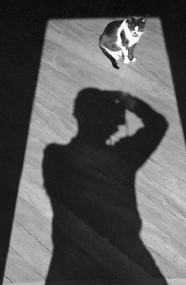In the lenses of a visionary
Videobrasil was born out of an initiative by Thomaz Farkas (Budapest, Hungary, 1924 – São Paulo SP, Brazil, 2011). After convincing his daughter-in-law Solange to hold a large event dedicated to the language of video, in addition to being one of Brazil’s most prominent photographers, he also became a leading figure in consolidating and legitimizing this art medium. He would later join Solange Farkas at the helm of the Festival, of which he became the main patron for the seven editions sponsored by Fotoptica, his company.
Apart from being a photographer, Farkas was a filmmaker, professor and businessman. He got his first photo camera as a gift from his father at age eight, and began taking pictures of people and places near the house where his family lived after moving from Hungary to Brazil in the 1930s. In 1942, at 18 years of age, he joined the historical Foto Cine Clube Bandeirante, alongside Geraldo de Barros, German Lorca, Gaspar Gasparian, among others. The group developed work connected with the advances of modern art in photography, which it spearheaded in Brazil. Shunning pictorialism and photographic styles linked to more traditional genres of painting (portrait, landscape etc.), the artists focused on aspects of the photographic medium per se, distancing themselves from treating photos as mere reproductions, and moving closer to various European constructivisms and their tendency toward abstraction and geometry.
In the following decade, some of the group’s members, like Geraldo de Barros, aligned themselves with the concretist movement in São Paulo. Farkas, however, took interest in a more humanistic, intimate, social photography more closely related to photojournalism. This trend was partly owed to his admiration of modern American photographers, such as Paul Strand and Edward Weston, whom he contacted once during a trip to the United States in 1948. His option, however, did not detract from his prior aesthetical achievements, even though it led him to depart from abstraction. This transition becomes clear in the series of photographs he made during the construction of Brasília, from 1957 to 1960. In 1949 he had his first solo show at the São Paulo Museum of Modern Art, and featured in a collective show at the Museum of Modern Art (MoMa), in New York, which purchased seven of his pictures for its collection.
In 1953, Farkas completed a degree in Mechanical and Electrical Engineering at the Polytechnic School of the University of São Paulo, where he started teaching photography in 1969 at the Film and Journalism courses of the School of Communication and Arts. He also taught at the São Paulo Museum of Art, where he founded a Photographic Laboratory alongside Geraldo de Barros. In 1960 he took office as the director of company Fotoptica, founded by his father in the 1920s, before the rest of the family immigrated to Brazil. In the 1970s he launched the Fotoptica magazine, designed to publicize photographic production, and the namesake gallery – one of the first to sell photos in the country. In that same decade, he was responsible for Caravana Farkas (the Farkas Caravan), a project aimed at making documentaries in the Brazilian countryside. In 2011, selected works of his were exhibited in the show Thomaz Farkas – Uma Antologia (Thomaz Farkas – An Anthology), held at Instituto Moreira Salles to mark the launch of the homonymous book.
